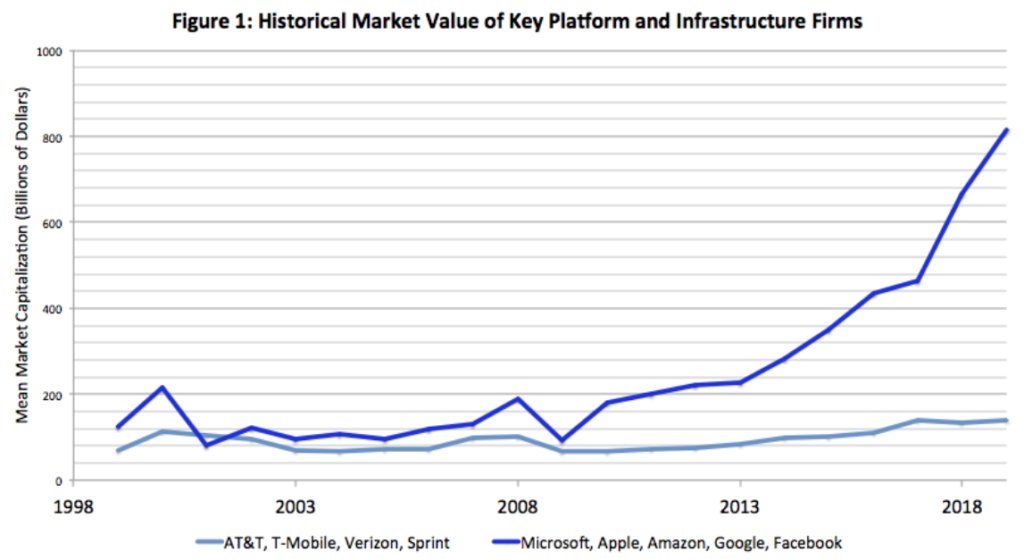Here’s the main problem with 5G (the chart below). The people who (currently, but that could change) are being asked to build the network may baulk at a potential repeat of what happened the last time they spent billions building the present network architecture.

The paper highlighted today covers a lot of ground in a short space; but if you don’t have time here are what I think are the main points:
5G, nice idea but who’s going to build the infrastructure? It’s going to cost between 4~6x what 4G cost. Carriers were hardly paid last time, why would they bother this time around?
You can’t simply re-wire existing base stations. At low frequencies some benefit can be achieved this way but ‘real’ 5G needs (lots and lots and lots of) high frequency base stations every few hundred meters.
A solution could be if carriers shared the risk; but they’ve been forced to compete for years by governments who see no benefit to collusion. This situation may have to change; but it’ll be hard.
The government in China is encouraging tech firms to invest, in Mexico there are subsidies, in the U.S. emergency services might help out; but nobody has a viable funding model for network build-out presently.
Today’s tech giants’ market positions may be strengthened as they have a lock on services. Or, they could be weakened if cloud architecture gives way to a more de-centralized data processing model.
China’s claim to be technically ahead is valid; but technical standards need to turn into network deployment and in that regard China is showing no signs of progress.
In theory, wonderful things are possible with 5G; but will it lead to productivity gains and can the infrastructure for delivery even be built? These are the hard questions that need answering before we can begin to get excited about autonomous vehicles or those virtual reality headsets that’ll allow shopping in Walmart from our living rooms.
You can access the longer read via this link 5G Revolution or Hype?
Happy Sunday.